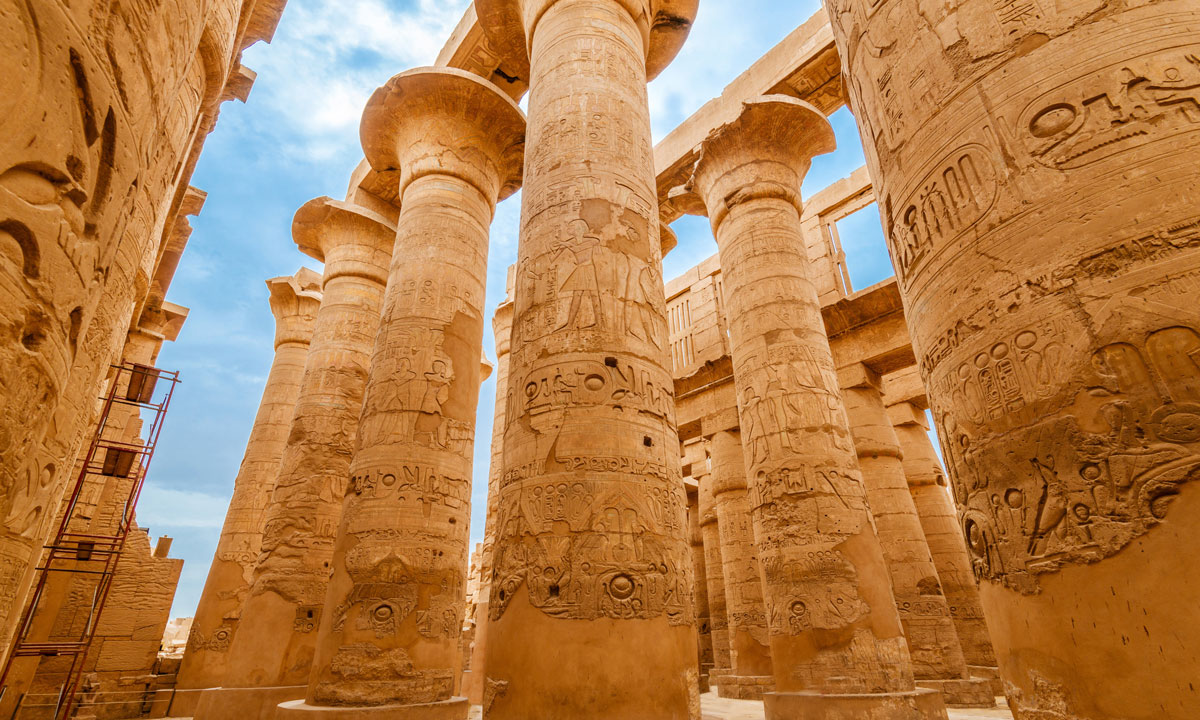While the iconic Pyramids of Giza often dominate the imagination when thinking of Egypt, the city of Luxor, ancient Thebes, holds an equally breathtaking concentration of monumental treasures. Situated on the banks of the Nile River in Upper Egypt, Luxor is often described as the world’s greatest open-air museum. It served as the vibrant capital of Egypt during the New Kingdom (roughly 1550–1070 BC), a period of immense power, wealth, and architectural ambition. A visit here transports you back millennia, offering unparalleled insights into the religious beliefs, daily lives, and funerary practices of the pharaohs. This guide delves into three of Luxor’s most unmissable sites: the sprawling Karnak Temple complex, the elegant Luxor Temple, and the mysterious Valley of the Kings.
Karnak Temple: A City of Gods
Prepare to be awestruck by Karnak. This is not merely a temple; it was the most important religious center in ancient Egypt for centuries, dedicated primarily to the Theban triad of Amun-Ra, Mut, and Khonsu. Covering over 200 acres, Karnak is a vast complex of sanctuaries, pylons (monumental gateways), obelisks, chapels, and sacred lakes, built, expanded, and embellished by successive pharaohs over nearly 2,000 years. Its sheer scale is overwhelming. The heart of Karnak is the Precinct of Amun-Ra, dominated by the Great Hypostyle Hall. This forest of 134 colossal sandstone columns, arranged in 16 rows and reaching heights of up to 21 meters (69 feet), is an architectural marvel. Walking through it feels like entering a realm of giants, the columns covered in intricate hieroglyphs and reliefs depicting pharaohs making offerings to the gods. Allow ample time to explore Karnak – wandering through its avenues, discovering hidden chapels, and marveling at the towering obelisks (including one belonging to Queen Hatshepsut) offers a profound connection to Egypt’s glorious past. Visiting early in the morning helps avoid the worst crowds and the midday heat.
Luxor Temple: Elegance on the Nile
Located in the heart of modern Luxor, Luxor Temple presents a more cohesive and elegant counterpoint to Karnak’s sprawling complexity. While also dedicated to the Theban triad, Luxor Temple was primarily the site of the annual Opet Festival, a crucial religious ceremony where the statues of Amun-Ra, Mut, and Khonsu were escorted in a grand procession from Karnak to Luxor Temple to celebrate the fertility and divine power of the pharaoh. Built largely by Amenhotep III and Ramses II, the temple follows a more traditional layout, approached via an impressive Avenue of Sphinxes that once connected it directly to Karnak (restoration efforts are ongoing). Ramses II’s contributions are prominent, including the massive first pylon adorned with reliefs of his military victories (notably the Battle of Kadesh) and colossal seated statues of himself guarding the entrance. Beyond the pylon lies a courtyard surrounded by papyrus-bundle columns and, further in, Amenhotep III’s elegant colonnade and sun court. Luxor Temple is particularly magical at sunset and after dark when the structures are dramatically illuminated, casting long shadows and highlighting the intricate carvings against the night sky.
Valley of the Kings: Gateway to the Afterlife
Across the Nile from Luxor lies the West Bank, the traditional necropolis of ancient Thebes. Here, hidden within a desolate, sun-baked valley dominated by the pyramid-shaped peak of al-Qurn, lies the legendary Valley of the Kings. This was the chosen burial ground for the pharaohs and powerful nobles of the New Kingdom, who abandoned the conspicuous pyramids of their predecessors in favor of deep, rock-cut tombs designed to protect their mummies and treasures from robbers. Over 60 tombs have been discovered here, ranging from simple pits to complex multi-chambered structures descending deep into the limestone cliffs. The tombs were intended as eternal resting places and gateways to the afterlife, their walls adorned with stunningly preserved, brightly colored reliefs and paintings depicting scenes from mythology, religious texts (like the Book of the Dead), and the pharaoh’s journey into the next world.
Visiting the Valley of the Kings requires careful planning. A general entrance ticket allows access to three tombs from a list of currently open ones (the selection rotates to manage visitor impact). Some tombs, like those of Tutankhamun (KV62), Seti I (KV17), and Ramses V/VI (KV9), require separate, additional tickets due to their exceptional preservation or historical significance. The tomb of Tutankhamun, famously discovered almost intact by Howard Carter in 1922, is relatively small but holds immense fascination, allowing visitors to see the boy king’s mummy. The tomb of Seti I is considered one of the longest, deepest, and most beautifully decorated, though its high extra ticket price reflects its fragility and splendor. Ramses V/VI’s tomb is renowned for its vibrant astronomical ceilings and well-preserved reliefs. When choosing which tombs to visit with the general ticket, consider popular choices like Ramses IV (KV2) for its excellent preservation and clear depictions, or Merenptah (KV8) for its long corridors and sarcophagus. Photography rules have changed, often allowing photos with a smartphone without flash, but separate camera passes might be needed for DSLRs, and flash is always prohibited to protect the ancient pigments. Guides are typically not allowed inside the tombs themselves to minimize crowding and humidity. Arrive early to avoid the heat and tour groups, wear comfortable shoes, and bring water.
Exploring Karnak, Luxor Temple, and the Valley of the Kings offers an unforgettable journey into the heart of ancient Egyptian civilization. Each site, unique in its purpose and design, reveals the incredible artistry, engineering prowess, and profound religious beliefs of a culture that shaped world history. Beyond the pyramids, Luxor stands as a testament to the enduring power and majesty of the pharaohs.
References:
- Earth Trekkers. (2024, December 18). Valley of the Kings: The Complete Guide for 2025. Retrieved from https://www.earthtrekkers.com/how-to-visit-valley-of-the-kings-luxor-egypt/
- Explore Luxor. A Guide to Karnak Temple. Retrieved from https://exploreluxor.org/karnak-temple/
- General knowledge about Luxor, Karnak Temple, and the Valley of the Kings.


0 Comment